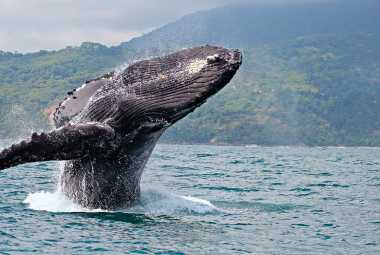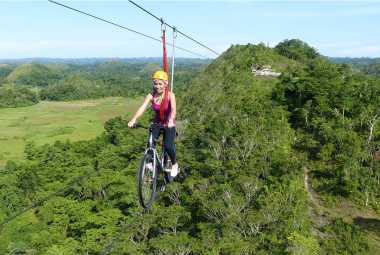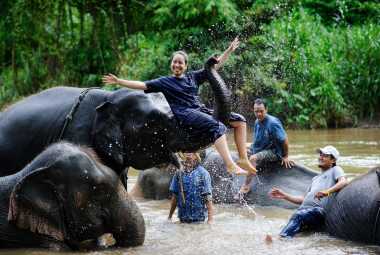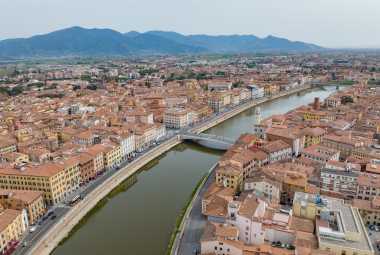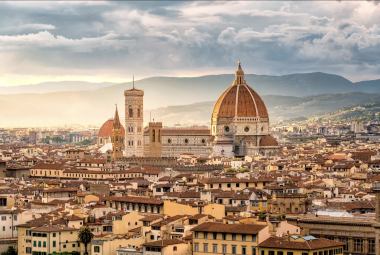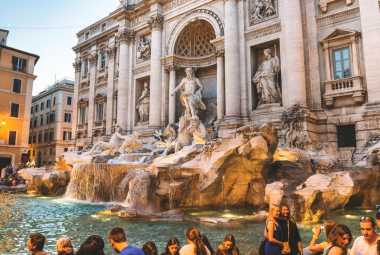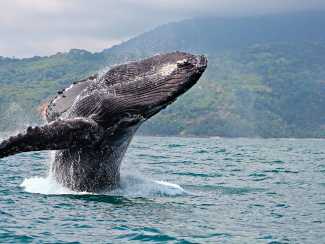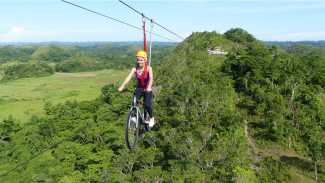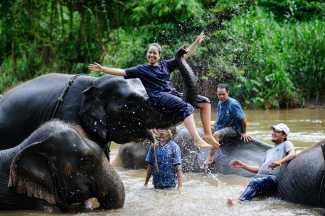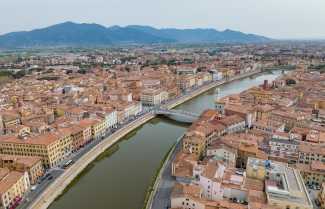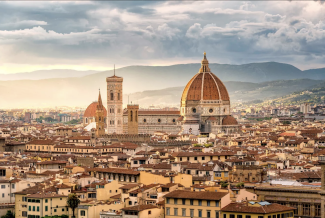Image by worldstrides.com
*Vacation Mode is a for-profit site. It contains paid banner advertisements that are generated and managed by a third-party network. This site also includes relevant affiliate links (both in the content and on the sidebar) all of which we do our best to clearly mark as such.
Quick Summary
- The Philippines is geographically larger and more diverse, whereas Singapore is a smaller, urbanized city-state.
- The Philippines has over 180 languages, showcasing its population's diversity; Singapore predominantly has a Chinese population with four official languages.
- The Philippines' economy is developing, focusing on agriculture and tourism. Singapore boasts a highly developed economy centered on finance, trade, and technology.
- Both countries are strategically positioned, enhancing their global trade roles and diplomatic relations within APEC and ASEAN.
- The Philippines features an archipelagic setup with over 7,000 islands, offering rich biodiversity and marine resources. Singapore combines urban development with greenery, underscoring its strategic location for shipping routes.
- Leaders like Corazon Aquino and Lee Kuan Yew have pushed for environmental conservation in their respective countries, highlighting the importance of balancing human development with nature.
- The climates of both countries are tropical, with the Philippines prone to typhoons and Singapore experiencing monsoon rains and occasional haze.
- Cultural diversity is rich in both nations, with a blend of ethnic groups and languages. The Philippines is primarily Catholic, while Singapore exhibits religious harmony among Buddhism, Islam, Hinduism, and Christianity.
- The economies of both countries are robust, with the Philippines focusing on agriculture, manufacturing, and services, and Singapore being a hub for finance, trade, and technology.
- Tourism is a key economic driver, with the Philippines known for its natural landscapes and historical sites, and Singapore for its modern attractions and culinary scene.
- Top Resorts in the Philippines and Singapore
- Both nations offer a range of tourist experiences, from natural wonders like the Banaue Rice Terraces in the Philippines to architectural marvels like Marina Bay Sands in Singapore.
- Environmental conservation and sustainable tourism are emphasized in both countries, with initiatives to protect natural landscapes and promote eco-friendly tourism practices.
Welcome to an in-depth exploration of the fascinating countries of the Philippines and Singapore. From their unique geography and diverse climates to the rich tapestry of cultures and people, and the thriving economies and development, each of these nations has a wealth of stories to tell. Join us as we delve into the heart of these two countries, uncovering the distinct flavors of their tourism and attractions. From popular tourist destinations and historical sites to natural landscapes and activities, there's something for everyone.
So, grab a seat and get ready to embark on a journey through the geography, culture, economy, and tourism of the Philippines and Singapore.
Key Takeaways:
- The Philippines is a larger and more geographically diverse country, while Singapore is a smaller, urbanized city-state.
- The Philippines has a diverse population with over 180 different languages, while Singapore has a predominantly Chinese population with four official languages.
- The Philippines has a developing economy with agriculture and tourism as major industries, while Singapore has a highly developed economy with a focus on finance, trade, and technology.
Backpack in the Philippines & Singapore
Video by Laura Kneip
Geography and Claimate
The geography and climate of the Philippines and Singapore play a crucial role in shaping the natural landscapes, economic activities, and overall living conditions of the two countries.
The Philippines is characterized by an archipelagic structure, comprising over 7,000 stunning islands set in the tropical waters of the Pacific Ocean. This unique geography blesses the country with an abundance of marine life, picturesque coastlines, and diverse ecosystems.
In contrast, Singapore, a small but vibrant city-state, features a harmonious blend of urban development and lush greenery. The strategic location of both nations has made them significant players in global trade and commerce, an established foundation for their diplomatic relations.
Location and Size

The location and size of the Philippines and Singapore are integral to their positioning within regional organizations such as APEC and ASEAN, with influential leaders like Fidel V. Ramos and Goh Chok Tong contributing to their diplomatic relevance.
The Philippines is an archipelago consisting of 7,641 islands, strategically located in the western Pacific Ocean. Its territorial dimensions span approximately 300,000 square kilometers, providing abundant marine resources and biodiversity. As a founding member of ASEAN, the Philippines aligns its foreign policy with regional interests, shaping diplomacy under the leadership of influential figures such as former President Fidel V. Ramos, who played a pivotal role in fostering regional cooperation.
Singapore, a sovereign city-state and island country in Southeast Asia, covers a land area of around 725 square kilometers. Its strategic geographic location along major shipping routes has bolstered its global economic significance. Former Prime Minister Goh Chok Tong contributed to APEC as a proponent of free trade and inclusive growth, consolidating Singapore's stature as a key player in regional diplomacy.
Topography and Natural Features
The topography and natural features of the Philippines and Singapore are influenced by both human development and environmental conservation efforts, with leaders like Corazon Aquino and Lee Kuan Yew advocating for the preservation of their diverse landscapes and rich biodiversity.
The Philippines boasts a varied topography, including lush rainforests, stunning coasts, and towering mountain ranges. This diverse landscape is home to a plethora of endemic species, making it a global biodiversity hotspot.
On the other hand, Singapore is characterized by its blend of urban development and natural reserves, exemplifying how modern cities can coexist harmoniously with the environment. If you are interested in visiting either the Philippines or Singapore, you can find more information about it here.
The leadership of Corazon Aquino witnessed a surge in environmental awareness and protection efforts, aiming to combat deforestation and promote sustainable land use. Similarly, Lee Kuan Yew's initiatives in Singapore focused on creating green spaces and implementing strict environmental regulations, leading to the establishment of parks, nature reserves, and eco-friendly urban planning.
Climate and Weather

The climate and weather patterns in the Philippines and Singapore are influenced by factors such as regional monsoons and climatic variations, with leaders like Suharto and Gloria Macapagal-Arroyo addressing the impacts of climate change and environmental resilience.
Both countries experience a tropical climate, characterized by high humidity and abundant rainfall throughout the year, with distinct wet and dry seasons. The Philippines is prone to typhoons, while Singapore faces the risks of heavy monsoon rains and occasional haze due to forest fires in neighboring regions.
Efforts to mitigate these challenges have been spearheaded by leaders and policymakers, with a focus on climate adaptation and sustainable development. Initiatives include the implementation of resilient infrastructure, reforestation projects, and the promotion of renewable energy sources to reduce carbon emissions.
Through international collaborations and domestic policies, both nations are working towards building environmental resilience and mitigating the impacts of climate change on their communities and ecosystems.
Culture and People
The vibrant culture and diverse people of the Philippines and Singapore embody a rich tapestry of ethnic groups, languages, religious beliefs, and cherished traditions, reflecting the harmonious coexistence and shared heritage of the two nations.
Characterized by a multitude of ethnic communities, the Philippines and Singapore showcase a captivating blend of Malay, Chinese, Indian, and Spanish influences, each leaving an indelible mark on the nation's cultural landscape. Tagalog and English serve as the official languages in the Philippines, while in Singapore, the linguistic plurality encompasses English, Mandarin, Malay, and Tamil, a testament to the linguistic diversity within these societies.
Religious practices in both nations are equally diverse, with Catholicism and Islam being prominent in the Philippines, while Buddhism, Islam, Hinduism, and Christianity coexist harmoniously in Singapore. Traditional customs such as fiestas, family gatherings, and vibrant festivals further enrich the cultural experiences in these countries, fostering a collective sense of identity and societal harmony.
Ethnic Groups and Languages

The ethnic groups and languages in Singapore are representative of its multicultural fabric, with leaders like Lee Hsien Loong advocating for linguistic diversity and the preservation of heritage languages within the society.
Singapore's population comprises a rich tapestry of ethnicities, including Chinese, Malay, Indian, Eurasian, and various other minority groups. Each group contributes to the cultural and linguistic diversity that defines the nation's identity. The government actively supports this diversity, recognizing four official languages: English, Mandarin, Malay, and Tamil.
Lee Hsien Loong's leadership has emphasized the importance of preserving heritage languages, enabling different ethnic communities to maintain their linguistic traditions. This support extends to the promotion of various cultural events and the establishment of heritage centers, celebrating the vibrant histories and customs of each group.
Religion and Beliefs
Religion and beliefs hold significant importance in the social fabric of the Philippines, with notable cases like Flor Contemplacion highlighting the intersections of faith, justice, and religious freedoms within the country.
The Philippines, being a predominantly Christian nation, embraces a diverse range of spiritual beliefs and practices, including Roman Catholicism, Islam, Protestantism, and indigenous animistic traditions. The historic struggle for religious freedoms has shaped the cultural and legal landscape of the nation, with the Spanish colonization introducing Catholicism as a dominant force. Despite this, the Philippines cherishes a rich tapestry of faith, fostering an environment where religious pluralism and coexistence thrive.
Traditions and Customs
The traditions and customs of the Philippines are deeply rooted in its cultural heritage, with figures like Delfin Lorenzana advocating for the preservation and promotion of traditional practices that embody the nation's rich history and societal values.
One of the most distinctive aspects of Filipino cultural heritage is the Bayanihan spirit, which reflects the communal unity and cooperation among community members. This spirit is demonstrated in traditional practices such as 'bayanihan,' where neighbors come together to assist in moving a house to a new location, showcasing the value of mutual support and unity.
The Barrio Fiesta is a beloved tradition, celebrating local culture, cuisine, and arts, providing a platform for preserving and promoting traditional practices. These initiatives play a crucial role in ensuring that the rich historical legacies and societal values of the Philippines are cherished and sustained for future generations.
Economy and Development

The economies of the Philippines and Singapore are dynamic and robust, driven by substantial GDP contributions, diverse industrial sectors, ample employment opportunities, and progressive infrastructure development, positioning both countries as economic powerhouses in the region.
The Philippines, known for its agriculture, manufacturing, and service sectors, plays a crucial role in the global supply chain, contributing significantly to international trade. Its strategic location, skilled workforce, and government incentives have attracted investments, fostering economic growth and stability.
On the other hand, Singapore serves as a financial, trade, and logistics hub, with a thriving technology and innovation ecosystem. Its advanced infrastructure, pro-business policies, and efficient workforce enhances its competitive edge, making it an attractive destination for multinational corporations seeking regional headquarters.
With increased investments in sustainable energy, transportation, and digital infrastructure, both countries are further solidifying their positions as regional economic leaders, driving innovation, and setting the stage for continued prosperity.
GDP and Industries
The GDP and industrial landscapes of the Philippines and Singapore demonstrate a blend of technological innovation, financial prowess, thriving trade relations, and strategic business initiatives, with the guidance of influential leaders such as the President and Prime Minister.
Both countries exhibit a diversified GDP composition, encompassing agriculture, manufacturing, services, and the burgeoning digital economy. The Philippines boasts a robust agricultural sector, while Singapore excels in finance and technology-driven services.
Furthermore, industrial sectors in both countries span pharmaceuticals, electronics, shipbuilding, and more, contributing significantly to GDP growth.
Technological innovations play a pivotal role in driving economic progress, with both nations actively pursuing advancements in renewable energy, AI, and smart infrastructure. The collaboration between local and international businesses is testament to the forward-looking approaches endorsed by the leadership, fostering an environment conducive to attracting foreign investments and stimulating growth.
Business collaborations between the Philippines and Singapore are instrumental in driving economic prosperity, aligning with the shared vision of sustainable development and mutual growth. The leadership's role in promoting effective policies, partnerships, and market-friendly regulations has propelled these nations to the forefront of regional economic powerhouses.
Employment and Job Opportunities
Employment opportunities in the Philippines and Singapore encompass diverse sectors, including military engagements, security cooperation, and media advancements, reflecting the multifaceted job landscape and collaborative efforts shaping their workforce dynamics.
Both countries have seen a growing emphasis on enhancing their military capabilities, leading to a rise in employment opportunities within the defense and security sectors. This has resulted in a surge of job roles related to defense technology, cybersecurity, and strategic intelligence, with a strong focus on fostering security collaborations to address regional challenges.
The rapidly evolving media landscape in the two nations has created an array of job prospects in digital marketing, content creation, and communications. The influence of media innovations has led to new roles and skill requirements, contributing to a dynamic employment market in these industries.
Infrastructure and Technology
Infrastructural advancements and technological innovations in the Philippines and Singapore are bolstered by international agreements, strategic trade partnerships, and research initiatives led by institutions such as the Singapore Institute of International Affairs, contributing to their progressive developmental trajectories.
Strategic partnerships between the Philippines and Singapore have opened avenues for knowledge exchange and collaborative ventures in the areas of urban planning, digital infrastructure, and sustainable energy solutions. Notable efforts include joint research projects between the National University of Singapore and the University of the Philippines, which focus on integrating smart technologies into urban transit systems and improving regional connectivity. Supported by trade agreements and governmental support, these initiatives are pivotal in fortifying the societal and economic resilience of both countries.
Tourism and Attractions
The tourism sectors of the Philippines and Singapore are pivotal drivers of economic growth and cultural exchange, characterized by iconic attractions, leisure activities, and opportunities for immersive visits that showcase the unique charm and allure of both nations.
Boasting an exquisite blend of natural landscapes and historical landmarks, the Philippines captivates visitors with its diverse offerings. From the stunning beaches of El Nido and Boracay to the vibrant metropolis of Manila, the country offers a spectrum of experiences. Meanwhile, Singapore stands as a modern marvel, renowned for its cutting-edge architecture, world-class shopping, and delectable culinary scene.
The Philippines and Singapore contribute significantly to the global tourism industry, attracting millions of visitors each year and playing a vital role in the economic prosperity of Southeast Asia.
Popular Tourist Destinations
The popular tourist destinations in the Philippines and Singapore encompass international events like the ASEAN summit, vibrant cityscapes such as Manila and Jakarta, and diplomatic landmarks exemplified by Washington, offering diverse and enriching experiences for global visitors.
Both the Philippines and Singapore boast an array of enchanting natural wonders and cultural treasures. The breathtaking Banaue Rice Terraces in the Philippines and the iconic Marina Bay Sands in Singapore stand as epitomes of human ingenuity and natural beauty. The Singapore Grand Prix and the Ati-Atihan Festival in the Philippines are internationally acclaimed events that draw visitors from around the world.
While Manila's Intramuros showcases the country's Spanish colonial heritage, Singapore's Chinatown and Little India epitomize the rich cultural tapestry of the city-state. Visitors can also relish the contemporary allure of Jakarta's SKYE Bar and the vibrant nightlife of Boracay Island in the Philippines.
Cultural and Historical Sites
Cultural and historical sites in the Philippines and Singapore feature iconic symbols such as Anoa-Singa, moments of resilience like the Ebola Reston incident, and collaborative initiatives like the Philippine-Singapore Action, underscoring the depth of their historical narratives and cultural significance.
These countries boast an array of significant landmarks that stand as testaments to their rich history. In the Philippines, the majestic Banaue Rice Terraces, a UNESCO World Heritage site, and the iconic Chocolate Hills of Bohol Island, capture the attention of history enthusiasts and tourists alike. Similarly, Singapore's Marina Bay Sands and the historic Fort Siloso demonstrate the city-state's intertwining of modernity and tradition.
Both nations also share a resilient spirit, evident in moments such as the peaceful People Power Revolution in the Philippines and Singapore's transformation from a trading post to a global economic powerhouse.
The synergistic collaboration between these nations does not end at historical narratives but continues in various joint efforts for environmental conservation, economic development, and cultural exchange, further solidifying their bond.
Natural Landscapes and Activities
The natural landscapes and activities in the Philippines and Singapore showcase cooperative efforts, military engagements, media representations, and economic vitality, offering diverse experiences that celebrate the environmental beauty and collaborative ventures of both nations.
Both countries boast breathtaking landscapes, from the stunning rice terraces in the Philippines to Singapore's lush gardens and scenic waterfronts. These environments provide ideal settings for a myriad of recreational activities, such as hiking, diving, and birdwatching, that attract nature enthusiasts from around the world.
The collaborative efforts between the Philippines and Singapore extend to a shared commitment to sustainable tourism, with various eco-friendly initiatives and protected areas that preserve the natural heritage of these nations.
The involvement of media platforms in promoting ecotourism and environmental conservation has been pivotal. Through documentaries, social media campaigns, and travel publications, these endeavors contribute to a heightened global awareness of the environmental treasures and eco-centric experiences available in both countries.
Top Resorts in Philippines
Amanpulo, Palawan

Located on the secluded island of Pamalican, Amanpulo is an exclusive paradise embodying tropical tranquility. Its luxurious villas and casitas are spread along pristine white-sand beaches, offering unparalleled privacy and access to the crystal-clear waters of the Sulu Sea. The resort is renowned for its world-class spa, exceptional dining experiences, and a wide range of water sports and island activities, making it a perfect retreat for those seeking ultimate relaxation and adventure in harmony with nature.
El Nido Resorts, Pangulasian Island, Palawan

Often referred to as the “Island of the Sun,” Pangulasian Island is part of El Nido Resorts, offering stunning views of both sunrise and sunset over the Bacuit Bay. This eco-luxury resort provides a blend of Filipino design and modern amenities in its spacious villas, with activities centered around the incredible biodiversity of El Nido's marine and terrestrial environments. Guests can indulge in snorkeling, diving, kayaking, and island-hopping tours, embracing the natural beauty of Palawan.
Click here to get rates from Booking.com.
Click here to get rates from Agoda.com.
Shangri-La's Boracay Resort and Spa, Boracay

Set in the heart of Boracay's vibrant and crystal-clear waters, Shangri-La's Boracay Resort and Spa offers an exclusive sanctuary. It features luxurious villas and suites with breathtaking sea views, private beaches, a range of fine dining options, and a spa set amidst a lush hillside. The resort is ideal for travelers seeking a blend of relaxation, gourmet experiences, and water sports on one of the world's most famous beaches.
Click here to get rates from Agoda.com.
The Farm at San Benito, Batangas

A holistic wellness retreat located in the foothills of Mount Malarayat, The Farm at San Benito provides a unique escape focused on health, healing, and well-being. With its vegan cuisine, natural spa treatments, and a variety of wellness programs, including detox, yoga, and meditation, guests can enjoy a rejuvenating experience surrounded by nature. The resort's luxurious villas and suites are designed to offer tranquility and comfort in a serene setting.
Click here to get rates from Booking.com.
Click here to get rates from Agoda.com.
Atmosphere Resorts & Spa, Dumaguete, Negros Oriental

Situated on the lush coastline of Dumaguete, Atmosphere Resorts & Spa is a boutique resort that offers a perfect mix of tropical luxury and dive adventure. Specializing in scuba diving, the resort provides access to some of the world's best muck diving sites, with the renowned Apo Island nearby. Its spacious accommodations, spa, and yoga classes cater to those looking for a wellness and adventure holiday in an intimate and relaxed environment.
Each of these resorts provides a unique glimpse into the diverse beauty and hospitality that the Philippines has to offer, making them top choices for travelers seeking luxury, adventure, and relaxation.
Click here to get rates from Agoda.com.
Top Resorts in Singapore
Singapore is renowned for its luxury accommodations that offer unique experiences blending urban sophistication with serene landscapes and impeccable service. While specific rankings and listings can vary, here are five exceptional resorts in Singapore that stand out for their luxury, location, and guest experiences. Please note that the detailed descriptions and rankings are based on general information about Singapore's top resorts and are not directly extracted from a singular source.
COMO Metropolitan Singapore

Nestled amidst the vibrant cityscape, COMO Metropolitan Singapore epitomizes contemporary elegance and wellness-focused hospitality. Guests are treated to a guaranteed room upgrade, ensuring an even more luxurious stay. The resort offers a daily a la carte breakfast and nightly cocktails at The Sky Bar, perfect for those looking to start and end their day in style. With unlimited artisan coffee, daily access to an infinity pool, and a state-of-the-art fitness centre, it caters to both leisure and health-conscious travelers seeking an urban retreat.
Click here to get rates from Booking.com.
Click here to get rates from Agoda.com.
JEN Singapore Orchardgateway by Shangri-La

Strategically located in the heart of Singapore, JEN Singapore Orchardgateway by Shangri-La offers an urban escape with breathtaking city views and direct access to one of Singapore's most bustling shopping districts. The resort ensures a memorable stay with luxury inclusions such as daily breakfast for adults, complimentary drinks, and convenient early check-in and late checkout options, subject to availability. Guests can also enjoy a complimentary upgrade to the next available room category, enhancing their experience with even more refined comfort and style.
Click here to get rates from Booking.com.
Click here to get rates from Agoda.com.
Shangri-La Singapore

Set amidst 15 acres of lush gardens, Shangri-La Singapore is a sanctuary of luxury, offering guests a tranquil escape from the hustle and bustle of the city. This resort is renowned for its exceptional service and exquisite accommodations, featuring complimentary Wi-Fi, daily breakfast for two adults, and a welcome drink upon arrival. An upgrade to the next available room category adds to the exclusivity of the stay, while early check-in and late checkout options provide added convenience for travelers.
Click here to get rates from Booking.com.
Click here to get rates from Agoda.com.
These descriptions provide a glimpse into the luxury and unique experiences offered by some of Singapore's top resorts. For more detailed information, you can visit Luxury Escapes for exclusive deals and comprehensive reviews.
Conclusion
In conclusion, the Philippines and Singapore present a compelling study of contrast and convergence, with their unique geographical landscapes, rich cultural tapestry, dynamic economies, and vibrant tourism sectors. While the Philippines dazzles with its vast archipelago, offering a rich biodiversity and a broad spectrum of languages and traditions, Singapore stands as a testament to urban efficiency and multicultural harmony within a compact city-state. Both nations navigate their development paths by leveraging their strategic locations, embracing environmental conservation, and fostering economic growth. Their commitment to preserving cultural heritage while innovating for future prosperity underscores a shared vision for a sustainable and inclusive future in Southeast Asia. As travelers and global citizens, exploring these countries offers a glimpse into the diverse yet interconnected world we inhabit, highlighting the beauty of diversity and the power of unity in shaping our global narrative.
Things to do in the Philippines
Things to do in Singapore


